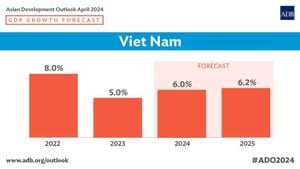A novel hybrid model combining the Cellular Potts Model and Particle Swarm Optimization has been proposed to optimize energy consumption and latency for edge computing applications, addressing the rising challenges faced by the increasing complexity and sensitivity of resource scheduling.
The recent surge of latency-sensitive, data-intensive applications, coupled with the proliferation of Internet of Things (IoT) devices, has reaffirmed the importance of edge computing as it brings computational resources closer to users. This shift from traditional cloud computing not only reduces network latency but also enhances bandwidth efficiency. Nevertheless, it poses new challenges for efficient task allocation across heterogeneous, resource-constrained edge nodes.
Research indicates conventional resource scheduling approaches, such as Round-Robin and Threshold-Based techniques, are inadequate when faced with the dynamic workloads and conditions typical of edge environments. These methods often lead to inefficient resource use, increased energy consumption, and heightened processing delays. Hence, innovative techniques capable of intelligent and adaptive scheduling are necessary. The hybrid model integrates the Cellular Potts Model (CPM), known for its ability to represent local interactions among resources, with Particle Swarm Optimization (PSO), which optimizes scheduling at a global scale.
The authors of the research argue, “The proposed hybrid CPM-PSO model can offer greater potential as a tool for energy-constrained and time-sensitive applications within the future development of edge computing.” Their method tackles Quality of Service (QoS) requirements like energy consumption and end-to-end delay more efficiently than conventional strategies.
This hybrid approach not only simplifies the scheduling process by drastically minimizing the overall search space, but also optimizes the efficiency of the resources. The paper presents empirical findings indicating this hybrid model consumes significantly less energy and has lower processing times compared to other strategies, showcasing its scalability and capability of handling multiple tasks and edge nodes simultaneously.
Further analysis within the paper contrasts the proposed hybrid CPM-PSO method with traditional scheduling mechanisms. Experimental evaluations have shown superior performance, achieving substantial energy efficiency and reduced task latency. Notably, the CPM element allows for local modeling of resource states and their dependencies, enabling effective resolution of complex scheduling challenges as workloads fluctuate.
According to the results presented, energy consumption decreases markedly when using the hybrid model. For example, as the number of tasks escalates from 10 to 100, the hybrid approach reduces energy usage from approximately 450 Joules to about 100 Joules, outperforming Round-Robin and Threshold-Based techniques, which exhibit higher energy demands.
Regarding latency, the hybrid method recorded average completion times ranging from 180 milliseconds for 10 tasks down to 50 milliseconds for 100 tasks. This advancement qualifies the hybrid CPM-PSO framework as highly advantageous for real-time, delay-sensitive applications.
Conclusively, the study suggests this hybrid framework, which elegantly combines local optimization with global search, could substantially advance the state-of-the-art for resource scheduling within edge computing. Future investigations may explore enhanced PSO variants or additional integrations to address the unique demands of various applications and rapidly changing environments.



